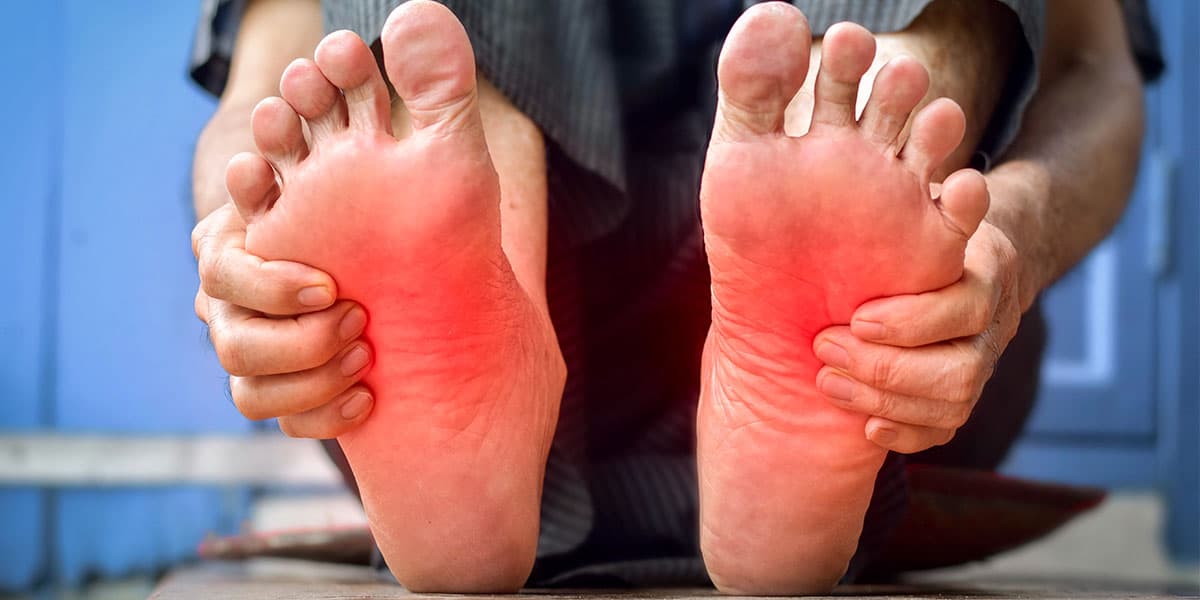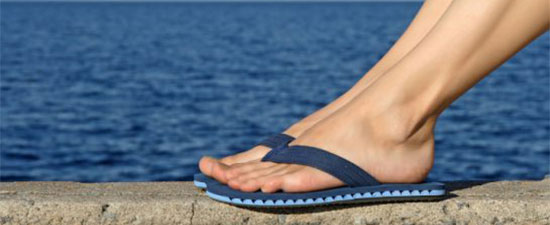- Home
- Foot & Ankle Conditions
- Plantar Warts
Plantar Warts: symptoms, causes and treatments
- Published 11/1/2023
- Last Reviewed 12/18/2023

What are plantar warts?
Plantar warts are rough, hardened warts that grow in the outer layers of skin on the soles of the feet. Unlike other types of warts, such as filiform warts, which can appear on the neck, or periungual warts found on the hands, plantar warts only affect the feet—making podiatrists the best choice for plantar wart treatment!
Typically, they appear on the areas of your feet that bear the most weight: the balls and heels. Due to the pressure from the foot, plantar warts may start to grow inward instead of outward, causing them to appear as flat warts instead of raised foot bumps or lumps. Sometimes, these skin-colored warts may also develop under a callus.
Also known as verrucas, plantar warts are caused by the same virus that causes common warts: the human papillomavirus (HPV). There are two plantar wart types: singular and mosaic, the latter being where several plantar wart lesions fuse in a cluster. Plantar warts are common in children, but they can affect adults too. Despite their prevalence, most plantar warts don’t require invasive treatment.
-
Dr. Hamed Jafary is a Board-Certified Podiatric Foot and Ankle Specialist by the American Board of Podiatric Medicine (ABPM). He specializes in trauma, reconstructive surgery, Charcot reconstruction, Ilizarov external fixation, and sports medicine. He is also a member of the American Board of Foot and Ankle Surgery and the American Board of Pediatric Medicine.
When not tending to patients at University Foot and Ankle Institute, Dr. Jafary utilizes his surgical expertise assisting those less fortunate. As a member of the Yucatan Crippled Children Foundation, he has traveled to Mexico several times and performed hundreds of limb correction surgeries on children with disabling foot and ankle disorders.
 I'm posting this literally an hour after my most recent appointment with Dr. Briskin. I've had a solid wart in my right heel fo...Josh G.
I'm posting this literally an hour after my most recent appointment with Dr. Briskin. I've had a solid wart in my right heel fo...Josh G. Good diagnostics and explanation. Both Dr and staff meet my first 5 minute rule.Alvin L.
Good diagnostics and explanation. Both Dr and staff meet my first 5 minute rule.Alvin L. The very Best!Antoinette O.
The very Best!Antoinette O. Very satisfiedJay G.
Very satisfiedJay G. Just Thank you! All is always the best services . Highly recommend.Ingrid F.
Just Thank you! All is always the best services . Highly recommend.Ingrid F. Excellent people. Excellent care.Bradley S.
Excellent people. Excellent care.Bradley S. The personal me trata con respeto mi doctor está tratando de que aser lo mejor para mi perdona graciasArmando T.
The personal me trata con respeto mi doctor está tratando de que aser lo mejor para mi perdona graciasArmando T. Dr. Barabarian is simply wonderful. I've been comfortable with him for several procedures. He answers each and every question a...Peggy W.
Dr. Barabarian is simply wonderful. I've been comfortable with him for several procedures. He answers each and every question a...Peggy W. 100% satisfiedJames R.
100% satisfiedJames R. It's a consistent fact that Dr. Redkar's staff is efficient and attentive. She herself is approachable and very in tuned to my ...La M.
It's a consistent fact that Dr. Redkar's staff is efficient and attentive. She herself is approachable and very in tuned to my ...La M. Hate these surveys.Rebecca A.
Hate these surveys.Rebecca A. Dr. Nalbandian provided a good understanding of my options and will follow up in 3 months to see how I am doing and what I shou...William B.
Dr. Nalbandian provided a good understanding of my options and will follow up in 3 months to see how I am doing and what I shou...William B.
-
 Listen Now
What Are Shin Splints?
Read More
Listen Now
What Are Shin Splints?
Read More
-
 Listen Now
Do Blood Pressure Medicines Cause Foot Pain?
Read More
Listen Now
Do Blood Pressure Medicines Cause Foot Pain?
Read More
-
 Listen Now
15 Summer Foot Care Tips to Put Your Best Feet Forward
Read More
Listen Now
15 Summer Foot Care Tips to Put Your Best Feet Forward
Read More
-
 Listen Now
Swollen Feet During Pregnancy
Read More
Listen Now
Swollen Feet During Pregnancy
Read More
-
 Listen Now
How Many Steps Do I Need A Day?
Read More
Listen Now
How Many Steps Do I Need A Day?
Read More
-
 Listen Now
Revealing the Secrets of Men's and Women's Shoe Sizes: Why Are They Different?
Read More
Listen Now
Revealing the Secrets of Men's and Women's Shoe Sizes: Why Are They Different?
Read More
-
 Listen Now
What Is Erythromelalgia?
Read More
Listen Now
What Is Erythromelalgia?
Read More
-
 Listen Now
The Link Between Foot Health and Posture
Read More
Listen Now
The Link Between Foot Health and Posture
Read More
-
 Listen Now
Why Are My Feet Different Sizes? It's More Common Than You Think
Read More
Listen Now
Why Are My Feet Different Sizes? It's More Common Than You Think
Read More
-
 Listen Now
Could Feet Be the Windows to Your Health?
Read More
Listen Now
Could Feet Be the Windows to Your Health?
Read More
-
 Listen Now
How To Tell If You Have Wide Feet
Read More
Listen Now
How To Tell If You Have Wide Feet
Read More
-
 Listen Now
Is Foot Analysis Better than Horoscopes? What Do Your Toes Reveal About Your Personality?
Read More
Listen Now
Is Foot Analysis Better than Horoscopes? What Do Your Toes Reveal About Your Personality?
Read More
-
 Listen Now
Flip-flops Causing You Pain? Protect Your Feet This Summer!
Read More
Listen Now
Flip-flops Causing You Pain? Protect Your Feet This Summer!
Read More
-
 Listen Now
Custom Orthotics vs. Over-the-Counter Inserts: Which Are Best for Your Feet?
Read More
Listen Now
Custom Orthotics vs. Over-the-Counter Inserts: Which Are Best for Your Feet?
Read More
-
 Listen Now
What To Do When Your Toenail Is Falling Off
Read More
Listen Now
What To Do When Your Toenail Is Falling Off
Read More















